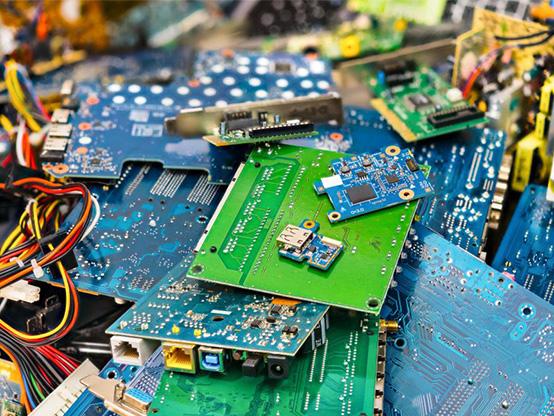Circular economy: new recommendations for national authorities to increase the return of used and waste mobile phones, tablets and laptops
Circular economy: new recommendations for national authorities to ... Environment.ec.europa.eu.



Policy Recommendations for Improving the Return of Used and Waste Electronic Devices
Today, the European Commission has adopted a set of policy recommendations for Member States to enhance the return of used and waste mobile phones, tablets, laptops, and their chargers. These recommendations aim to support national authorities in achieving maximum collection rates and promoting the re-use, repair, refurbishment, and recovery of these small electronic devices.
The collection rate of small electronic devices in the European Union (EU) remains alarmingly low. For instance, the collection rate of mobile phones is reported to be less than 5%, and it is estimated that there are 700 million unused and waste mobile phones stored in households across the EU.
These devices are not only valuable in terms of their functionality but also contain precious materials, including critical raw materials. A single smartphone contains rare earths in the magnet, cobalt in the battery, indium in the screen, and tantalum, gallium, and precious metals in the printed-circuit board.
Increasing the repair, re-use, and recycling of small electronics will contribute to the transition towards a circular economy, ensure the availability of critical raw materials and energy, and enhance the EU’s strategic autonomy.
Policy Recommendations
- Financial incentives: Member States are encouraged to implement financial incentives such as discounts, vouchers, deposit-return schemes, or monetary rewards. These incentives should target non-functional small consumer electronics that are still kept in households and small working electronics that can be resold, reused, or repaired. Consumers should be provided with the necessary tools to make informed decisions, such as calculating the value of a device.
- Increasing the use of postal services: Member States should explore the use of postal services for the return of used and waste mobile phones, tablets, and laptops. This can be facilitated by providing pre-paid envelopes or labels to consumers.
- Establishing partnerships: Collaboration between reuse organizations and operators of take-back schemes should be encouraged. Additionally, setting targets for reuse and preparation for reuse can further promote the circular economy.
- Increasing awareness: Efforts should be made to raise awareness about collection points where people can return small electronics. User-friendly maps, search tools, and applications can be utilized to provide information about the nearest take-back points. It is also important to inform individuals about the proper management and deletion of personal data stored in their devices.
“There are more than 700 million old phones lying around in our drawers – that’s almost two for every person in the EU. Citizens often find it difficult to decide what to do with them. We can make it clearer and easier how to get such products returned, repaired and recycled. Today’s recommendations focus on effective measures and incentives to increase the collection rate of small electronics across the EU, giving them a second life. It’s a win-win – people can benefit in many ways, while the circular economy grows and we don’t lose critical raw materials.”
– Commissioner for Environment, Oceans and Fisheries, Virginijus Sinkevičius
Next Steps
Member States are urged to consider the Commission Recommendation and take appropriate actions to support the effective implementation of EU waste legislation on electrical and electronic equipment (WEEE Directive). This includes fulfilling the separate collection and take-back obligations imposed on Member States.
Background
Since 2002, the EU has regulated waste electrical and electronic equipment (WEEE) to mitigate its adverse environmental and health impacts. In 2012, the WEEE Directive was evaluated and revised. The Directive mandates the separate collection of WEEE and requires Member States to establish take-back systems for consumers to return such waste. Various responsibilities are assigned to municipalities, producers, distributors, and retailers. The Directive sets ambitious targets for the collection, preparation for re-use, recycling, and recovery of WEEE.
The European Green Deal and the Circular Economy Action Plan emphasize the need to explore options for improving the take-back of small consumer electronics. The Commission conducted a study analyzing different types of take-back schemes. Considering the importance of recovering critical raw materials from WEEE, as addressed in the Commission Communication on a secure and sustainable supply of critical raw materials, these policy recommendations have been adopted to enhance the rate of return of these devices.
More Information
SDGs, Targets, and Indicators
| SDGs | Targets | Indicators |
|---|---|---|
| SDG 12: Responsible Consumption and Production | Target 12.5: By 2030, substantially reduce waste generation through prevention, reduction, recycling, and reuse | The collection rate of small electronic devices |
| SDG 12: Responsible Consumption and Production | Target 12.6: Encourage companies, especially large and transnational companies, to adopt sustainable practices and to integrate sustainability information into their reporting cycle | Increasing the repair and re-use of small electronics |
| SDG 12: Responsible Consumption and Production | Target 12.7: Promote public procurement practices that are sustainable in accordance with national policies and priorities | Financial incentives such as discounts, vouchers, deposit-return schemes, or monetary rewards |
| SDG 12: Responsible Consumption and Production | Target 12.8: By 2030, ensure that people everywhere have the relevant information and awareness for sustainable development and lifestyles in harmony with nature | Increasing awareness and improving the convenience and visibility of collection points |
| SDG 9: Industry, Innovation, and Infrastructure | Target 9.4: By 2030, upgrade infrastructure and retrofit industries to make them sustainable, with increased resource-use efficiency and greater adoption of clean and environmentally sound technologies and industrial processes | Increasing the repair and re-use of small electronics |
| SDG 9: Industry, Innovation, and Infrastructure | Target 9.5: Enhance scientific research, upgrade the technological capabilities of industrial sectors in all countries, in particular developing countries, including, by 2030, encouraging innovation and substantially increasing the number of research and development workers per 1 million people and public and private research and development spending | Increasing the repair and re-use of small electronics |
| SDG 11: Sustainable Cities and Communities | Target 11.6: By 2030, reduce the adverse per capita environmental impact of cities, including by paying special attention to air quality and municipal and other waste management | The collection rate of small electronic devices |
1. Which SDGs are addressed or connected to the issues highlighted in the article?
- SDG 12: Responsible Consumption and Production
- SDG 9: Industry, Innovation, and Infrastructure
- SDG 11: Sustainable Cities and Communities
The article discusses the need to improve the collection rate, re-use, repair, refurbishment, and recovery of small electronic devices. This aligns with SDG 12, which focuses on responsible consumption and production. Additionally, the article mentions the presence of precious materials in these devices, highlighting the importance of resource-use efficiency and sustainable practices, which are also addressed in SDG 9. The issue of waste management and the need to reduce environmental impact connects to SDG 11, which aims to create sustainable cities and communities.
2. What specific targets under those SDGs can be identified based on the article’s content?
- Target 12.5: By 2030, substantially reduce waste generation through prevention, reduction, recycling, and reuse
- Target 12.6: Encourage companies, especially large and transnational companies, to adopt sustainable practices and to integrate sustainability information into their reporting cycle
- Target 12.7: Promote public procurement practices that are sustainable in accordance with national policies and priorities
- Target 12.8: By 2030, ensure that people everywhere have the relevant information and awareness for sustainable development and lifestyles in harmony with nature
- Target 9.4: By 2030, upgrade infrastructure and retrofit industries to make them sustainable, with increased resource-use efficiency and greater adoption of clean and environmentally sound technologies and industrial processes
- Target 9.5: Enhance scientific research, upgrade the technological capabilities of industrial sectors in all countries, in particular developing countries, including, by 2030, encouraging innovation and substantially increasing the number of research and development workers per 1 million people and public and private research and development spending
- Target 11.6: By 2030, reduce the adverse per capita environmental impact of cities, including by paying special attention to air quality and municipal and other waste management
Based on the issues discussed in the article, the specific targets that can be identified include reducing waste generation (Target 12.5), encouraging sustainable practices and integration of sustainability information (Target 12.6), promoting sustainable procurement practices (Target 12.7), increasing awareness for sustainable development (Target 12.8), upgrading infrastructure for sustainability (Target 9.4), enhancing technological capabilities (Target 9.5), and reducing the environmental impact of waste management (Target 11.6).
3. Are there any indicators mentioned or implied in the article that can be used to measure progress towards the identified targets?
- The collection rate of small electronic devices
- Increasing the repair and re-use of small electronics
- Financial incentives such as discounts, vouchers, deposit-return schemes, or monetary rewards
- Increasing awareness and improving the convenience and visibility of collection points
The article mentions the collection rate of small electronic devices, which can be used as an indicator to measure progress towards Target 12.5. The focus on increasing the repair and re-use of small electronics serves as an indicator for Targets 12.6, 9.4, and 9.5. The mention of financial incentives and increasing awareness and convenience of collection points can be indicators for Target 12.7 and Target 12.8.
4. Table: SDGs, Targets, and Indicators
| SDGs | Targets | Indicators |
|---|---|---|
| SDG 12: Responsible Consumption and Production |
Behold! This splendid article springs forth from the wellspring of knowledge, shaped by a wondrous proprietary AI technology that delved into a vast ocean of data, illuminating the path towards the Sustainable Development Goals. Remember that all rights are reserved by SDG Investors LLC, empowering us to champion progress together. Source: environment.ec.europa.eu
Join us, as fellow seekers of change, on a transformative journey at https://sdgtalks.ai/welcome, where you can become a member and actively contribute to shaping a brighter future.
|








